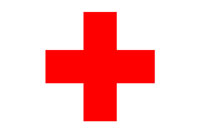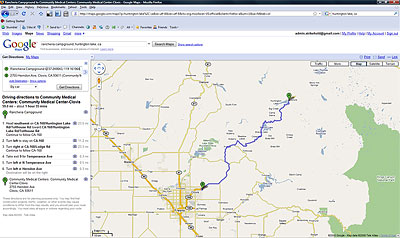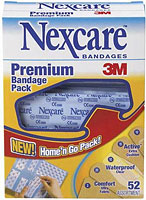 Taking a few, basic, first aid items with you when you venture into the backcountry is an important consideration that is often overlooked until the first time an item is actually needed. You don’t have to run out and buy a first aid kit, though, because if you have kids then you surely have most of this stuff in your house, already.
Taking a few, basic, first aid items with you when you venture into the backcountry is an important consideration that is often overlooked until the first time an item is actually needed. You don’t have to run out and buy a first aid kit, though, because if you have kids then you surely have most of this stuff in your house, already.
The most prevalent issues that you might have to deal with in the backcountry are cuts and scrapes, burns from the campfire, bee stings, and poison ivy/poison oak. Yes, you could assemble a full-fledged medical kit with splints and scalpels but, let’s face it, for serious issues you will (and should) head to the nearest hospital.

Google™ Maps is an easy way to locate the nearest hospital, before you head out on your trip. Once you have the campground mapped, just do a search on “emergency care†and Google will show you all of the nearby facilities.

3M makes a great bandage-assortment that is very economical
Our first aid kit is pretty simple, compared to most. We have a “sleeve” of adhesive bandages out of a Nexcareâ„¢ assortment-pack. These bandages come in different shapes and sizes, seem to stick to anything, and they’re about half the price of the leading brand. Every cut and scrape also gets a dab of Neosporin® to help keep it from becoming infected. The kit is rounded-out with aspirin for the adults, Children’s Tylenol® for the kids, a tube of Cortizone-10® cream for itchy skin, some tweezers, and a couple of Instant Cold Ice Packs. We have used everything in our first aid kit except for the Cortizone-10 cream. Knock on wood, but so far, the Scribner kids seem to have inherited mom and dad’s natural resistance to poison oak.
Whenever venturing into the backcountry, it’s important to be prepared for emergencies and problems that could cut your trip short, if not taken care of. Put together a few first aid items and keep them with your toiletries (toothbrush, toothpaste, etc.) so that everyone knows where it’s at, and it’s in a place that is frequently viewed – so you know when it’s time to replenish used items.
See also…

I have a hardshelll waterproof box I got at a yardsale yrs ago (a discontinued airline supply box of some sort) & I pointed large red cross on top. Besides the mentioned items, I include quite a bit more as when off the beaten path, can be expensive to get even band aids. Other Items: elastic tape, blister kit, vinegar (bugs bites, ivy exposure, even coral), Zycam, neosporin, alcohol, aloe vera gel, selection of sinus (Benadryl + seasonal homeopathic), aspirin, motrin & tylenol, eye drops/wash, peroxide (esp. if water activity probable-for ears), gel for mouth pain + very cheap filling etc quick fix, tweezers, small scissors (Swiss army knife actually), water purifying tablets, tiger balm/preferred lineament. I keep a small makeup-type bag with baggies containing small amts of what I consider “musts” to throw in backpack if hiking or any all-day-away activity. The main kit lives in my first-aid drawer at home so that items don’t expire. This box has prevented many trips from being cut short, much discomfort and certainly money as I purchase larger sizes/amounts when on sale and just replenish my smaller containers when packing. And with the coolers available now (if in shade, cool for 3 days). I did not start out 35 yrs ago having appropriate storage for or even had all the items mentioned, but for at least 30 yrs, the kit has remained pretty stable. Measures approx 10 x 10 x 4 so doesn’t eat up cooler space. If you camp/hike often (even if traveling, I save $ by camping rather than motels), I think once it’s together, you will not know how you lived without it. Especially if you like to camp off the beaten path here and there. Waterproof boxed are available at any good outdoor equipment store or scuba shop as you probably won’t luck into one like I did – & it’s likely to be your most $ item. (When I visit out-of-town family or friends, I’m usually better supplied than my hosts!
Nice info..now i know the important about Google Maps.
Wow, I’ll bet that wasn’t much fun. Something else I probably should have mentioned in this article is how you cannot always rely on your cell phone. There are several places we can where we don’t get any cell phone coverage.
Brilliant to mention locating your nearest hospital before venturing out. This was something I failed to do on one of my earliest family trips and we ended up with a broken wrist that went un-set for hours while we tried to find a hospital. Lucky for us, the phone lines were down hurray! As always with camping, it’s a funny story when we look back. Everyone is healthy and happy but we’ll never make that mistake again!
Big Hank’s last blog post..Camp with the Camping Guru!
Kimba – that’s a classic about the princess bandaid 🙂 I keep thinking about getting some new tubs – I’m not completely happy with the size of the ones we’re using now.
Great reminder for first time campers. I forgot my first aid box on my last trip of the year, and was embarassed not to have a band aid and neosporin for a cut my son aquired. A rookie mistake! Lucky for us we had neighboors who were prepared, and my 12yr old son adored the pink princess bandaid! 🙂 I usually break my camp gear into “boxes”. I have a tool box, a kitchen box, and a bathroom box (which includes first aid items). It makes planning a trip easy as I have most everything all ready packed and ready to go – but only works if you remember to refill! Love the idea of the map and phone numbers..great idea that I will be sure to use.
Yikes, a dislocated elbow? That sounds like a trip you won’t soon forget. Thanks for the compliments!
Great article (and site!) Roy! My husband and I were avid campers before we had children and have now made the transition to “family” camping which is a bit different! Your advice is spot on. THE most important thing is locating a hospital before you head out camping or finding out where the closest one is from someone once you get to your camping location.
Although most of our camping injuries have been of the “boo-boo” bandaid variety, one of our guys did manage to dislocate his elbow last year (jumping on the air mattress – like I said, we’ve changed since having children!). We had not bothered to located a hospital before the trip, and fortunately hubby was able to pop the elbow back in while I hunted down a hospital. Would have been nice not to have been panicking about where a hospital was located though!
Lori’s last blog post..Blog Yourself a Green Job
Pingback: first aid for usmle step 1 » Blog Archive » First aid for ward
Thanks Adam – that’s not a bad idea. We’ve even got an ACE here in the house, but we’ve just never added it to the “camping kit.” We added the ice packs after my son fell against the fire ring and burned his forearm – it’s important to be prepared when you’re camping with kids, you just never know.
The importance of carrying a first aid kit (and knowing how to use it) can not be overstated. Take if from an ex S.F. Combat Medic, who has also broken bones while in the wilderness as a civilian.
As you stated, most injuries incurred out doors are minor scrapes, cuts, bumps and bruises. These are followed by joint injuries. Most notably ankle and knee (in that order) sprains.
If there were one thing that I would add to your list, it would be an “Ace Bandage” type of wrap. I have a weak ankle as the result of a break and I sprain it every couple of years. The last time I did it, I was “car camping” in Shenandoah and was fortunate enough to be able to take a cold bottle of beer and wrap it to my ankle for the night until we left the next morning.
Great article.
Adam
Adam Shake’s last blog post..Newest Barack Obama Video – Obama Speaks with Al Gore About Global Warming